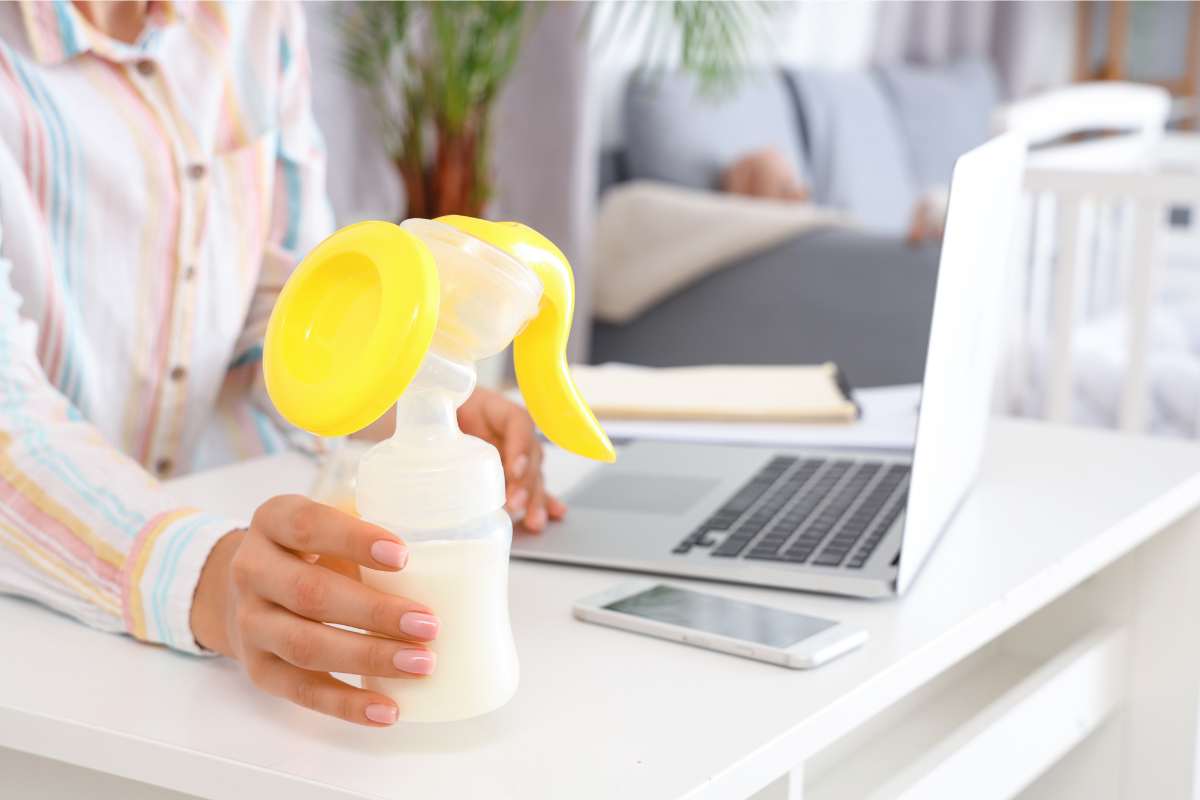Practical tips, schedules, and tools to help working moms thrive.
Balancing breastfeeding with a full-time or part-time job is possible—and more common than ever. Whether you’re returning to the office, working hybrid, or juggling travel for work, having the right plan and tools makes all the difference.
This guide breaks down everything new moms need to know, from pumping schedules to milk storage, workplace rights, and how products like the DISONCARE Breast Milk Cooler make breastfeeding on the go easier and safer.
1. Understanding Your Legal Rights at Work
In many countries—including the U.S.—employers are required to provide:
✅ A private pumping space (not a bathroom)
✅ Reasonable break time for pumping
✅ Protection against discrimination as a breastfeeding parent
In the U.S., the PUMP Act (2023) strengthened rights for most working mothers, ensuring they can pump safely and without penalty.
Tip: Before returning to work, speak with HR about where you can pump and store breast milk.
2. How Often Should You Pump at Work?
Most breastfeeding moms follow a schedule similar to baby’s feeding routine:
Typical Workday Pumping Schedule
-
Before leaving home: Nurse or pump
-
Mid-morning (2–3 hours later): Pump
-
Lunch break: Pump
-
Afternoon (2–3 hours later): Pump
-
After returning home: Nurse baby
This helps maintain milk supply and prevents engorgement or clogged ducts.
⭐ DISONCARE TIP
If you pump every 2–3 hours, you’ll likely produce 2–4 bottles during a workday. Having a reliable cooler—such as the DISONCARE Breast Milk Cooler (24-hour cooling)—keeps each session’s milk safe until you get home.
3. Storing Breast Milk Safely at Work
Freshly pumped breast milk is safe at:
-
Room temperature (up to 77°F/25°C): 4 hours
-
Office refrigerator: 4 days
-
In a cooler with ice packs: up to 24 hours
If you’re commuting, working outdoors, or do not have easy access to a fridge, a dedicated cooler is essential.
⭐ Why moms choose DISONCARE
The DISONCARE Breast Milk Cooler maintains chilled temperatures for up to 24 hours, thanks to thick insulation and long-lasting ice packs—ideal for nurses, teachers, retail workers, flight staff, and moms with long commutes.
4. Building a Pumping Routine That Works With Your Job
Every workplace is different, but here are solutions for common challenges:
🔹 Office Jobs (Desk-Based Roles)
-
Block two or three 20-minute pumping sessions
-
Use a hands-free or double pump
-
Store milk in a cooler to avoid shared fridge discomfort
🔹 Healthcare, Retail, and Shift Workers
-
Carry a mobile pumping bag with cooler
-
Use wearable pumps during long shifts
-
Keep extra flanges at work for emergencies
🔹 Traveling for Work
-
Use a hard-side cooler to keep milk cold during flights
-
Know TSA rules (breast milk is allowed in quantities >3 oz)
-
Ask hotels for a mini-fridge with a freezer compartment
Best match: The DISONCARE Hard Breast Milk Cooler—engineered for long trips, airports, and days without refrigeration.
5. Choosing the Right Pumping Equipment
⭐ Essentials for Working Moms
-
Reliable breast pump (double electric or wearable)
-
Extra pump parts
-
Breast milk cooler
-
Milk storage bags
-
Cleaning wipes for sanitizing on the go
⭐ Optional, but helpful
-
Hands-free pumping bra
-
USB rechargeable pumps
-
Mini drying rack
With insulated cooling compartments, DISONCARE coolers integrate seamlessly into pump bags.
6. Balancing Work Stress & Milk Supply
Stress can temporarily reduce pumping output—this is normal.
Ways to support milk supply:
-
Stay hydrated
-
Eat small, nutrient-dense meals
-
Look at baby photos while pumping
-
Use heat packs before sessions
-
Power pump when needed
-
Ensure consistent breast emptying
A cooler helps maintain consistency—no skipping sessions because of milk storage issues.
7. Pumping & Commuting
Whether by car, subway, or rideshare, moms often pump on the go.
Tips for a smoother commute:
-
Wear a hands-free pump
-
Use a seatbelt-friendly setup
-
Keep milk in a cooler during travel
-
Have backup power banks
DISONCARE’s compact cooler fits under car seats or in tote bags, making it ideal for daily rides.
8. Sample Pumping Schedule for Working Moms
If you work 9–5:
-
7:00 AM – Nurse/pump
-
10:00 AM – Pump
-
1:00 PM – Pump
-
4:00 PM – Pump
-
6:00 PM – Nurse
-
9:00 PM – Optional pump if needed
If you work long shifts (12+ hours):
-
Pump every 2–3 hours
-
Breaks may be shorter, so use a wearable pump
-
Store all milk in a 24-hour cooler
9. Maintaining Work-Life-Mom Balance
You’re not “just pumping at work”—you’re feeding a human being.
Things to remind yourself:
💛 Your body is doing something incredible
💛 Pumping is temporary
💛 Every ounce counts
💛 You deserve support—not stress
Having dependable tools (like a quality pump and cooler) reduces daily mental load.
10. Final Thoughts: You CAN Breastfeed and Work Successfully
Breastfeeding does not need to end when maternity leave does. With preparation, supportive employers, and the right tools—especially reliable milk storage—most moms succeed long-term.
The DISONCARE Breast Milk Cooler Collection supports working moms by offering:
✔️ 16–24 hour cooling
✔️ Travel-safe designs
✔️ Lightweight, compact sizes
✔️ Options for both daily commutes and long work trips

